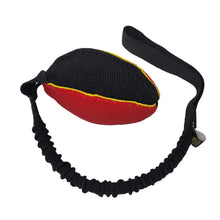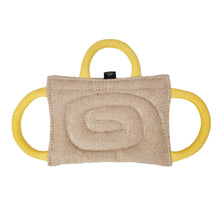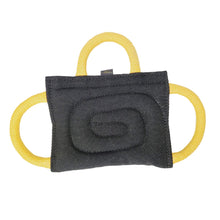11 Vegetables You Should Add To Your Dogs Diet

There’s a lot of debate about what is the best food to feed a German Shepherd. But, no matter what your feeding philosophy or budget is, most owners agree that by adding fresh food to their dog’s bowl, they can enhance their pet’s diet.
One way to do this is be feed your dog a variety of fresh vegetables. Fresh veggies are a great source of nutrients that can improve your dog’s health, support their gut microbiome, and help prevent many diseases.
Fresh vegetables provide huge health benefits to dogs. They contain powerful health-protecting antioxidants that are also low in calories, which gives them a huge bang for your dog food budget buck.

The antioxidants found in vegetables are the vital nutrients that help protect a dog’s body from damage caused by free radicals, which cause disease and inflammation. Antioxidants are the front line of defense for these unwelcomed yet unavoidable invaders.
Free radicals are harmful because they break down the cells in dogs. As a dog’s body ages, this oxidative stress contributes to age-related declines in health and makes pets less able to fight off serious health problems, such as heart disease, cancers, arthritis, and much more.
So, when it comes to keeping your dog healthy, the antioxidants found in vegetables can’t be beat. They also include vital nutrients that are not found in meats, organs, and bones, as well as the soluble and insoluble fiber needed for maintaining good gut health.
How much vegetables should I feed my dog?
When adding fresh vegetables to your dog’s diet, use the “10% rule.” The 10% rule means that 10% of your dog’s daily calories can come from nutritionally incomplete food and won’t ruin the balanced diet you normally feed.
For example, if you normally feed your dog 500 calories per meal, 50 of these calories can be made up of vegetables. Since vegetables are so low in calories, 50 calories is a decent-sized serving and most likely won’t cause digestive upset.
How should I prepare the vegetables?
How you prepare the vegetables will depend on you and how well your dog digests them. Many dogs enjoy raw vegetables but don’t digest them well. Finely chopping vegetables can help make them easier to digest for some dogs.

But, if they pass through your dog undigested, cause gas, or your dog doesn’t enjoy them, they’re not providing the needed health benefits. However, there is an easy way to ensure your dog absorbs all the important nutrients.
Simply gently steam or sautéing the vegetables until they are soft. If your pet is picky about eating them, try blending them in a blender to make a thick soup-like topper. You can also cook them in bone broth to make them more tempting.
Here are 11 dog-friendly vegetables to get you started:
1. Carrots
Carrots are easy to come by and most people have them in the fridge. But, just because they’re so familiar, don’t underestimate how nutritious they are. Carrots are good for eye health, antibacterial, and antifungal, and also help detox the body.

2. Broccoli sprouts
Broccoli sprouts are packed with anti-aging properties. They help detox the body from harmful chemicals and reduce inflammation. They are also good for maintaining heart health.
3. Broccoli
Not into sprouts? That’s okay because you can feed your dog broccoli and it may be easier to get at the store. Broccoli is a powerful house vegetable that helps reduce inflammation. It is said to be great at helping to prevent cancer and maintain hormone balance.
4. Celery
Celery is another vegetable that helps prevent bacterial and fungal infections. It also helps fight inflammation and detox the body from toxic compounds. It’s very high in fiber and packed with moisture.

5. Red and green bell peppers
Bell peppers are pungent but some dogs love them. They are great for fighting inflammation and boosting the immune system. They are also packed with beta-carotene, which is beneficial for the skin, eyes, and coat.
6. Asparagus
Like all vegetables, asparagus is filled with vitamins to promote overall health and wellness. But it also contains glutathione, a detoxifying chemical that is great for the brain. The thick, woody stalk at the end should not be fed since it’s hard to digest.
7. Zucchini
Zucchini is a vegetable that is usually easy to digest raw and cooked. It’s packed with nutrients that help protect the immune systems and promote healthy skin and coat.

8. Yellow squash
Yellow squash is another vegetable that is packed with vitamins and antioxidants that protect the immune system, aid in helping the body heal, as well as promote good vision.
9. Brussels Sprouts
Next time you don’t want to eat your Brussels sprouts, your dog can! Cruciferous vegetables, such as Brussels sprouts, are filled with cancer-fighting properties.
10. Cucumber
Cucumbers are high in moisture but also high in antioxidants that help reduce inflammation. The pectin in them is good for digestion and the gut microbiome.

Spinach is even better than carrots for promoting eye health. It’s anti-aging, and anti-inflammatory, and helps protect the immune system and heart health.
You can’t go wrong by adding some of these vegetables to your dog’s diet as long as they don’t cause digestive problems.
To get your dog used to eating them regularly, start off with a small amount and monitor their digestion. If they get gassy or diarrhea, write down what you fed them, and when their gut calms down, try a different cooked vegetable.

Only reintroduce a small amount of vegetables when your dog is free of digestive upset, unless a particular vegetable made them sick and you don’t plan to try it again. There are so many great options, there is no point in trying to force your dog to eat a vegetable they don’t enjoy or causes them digestive problems.
We hope you enjoy adding more vegetables to your dog’s diet. Please feel free to share this information with your friends.
You might also like: Can You Feed Your Dog Raw Chicken?
























